bFGF regulates PI3-kinase-Rac1-JNK pathway and promotes fibroblast migration in wound healing
- PMID: 20808927
- PMCID: PMC2923192
- DOI: 10.1371/journal.pone.0012228
bFGF regulates PI3-kinase-Rac1-JNK pathway and promotes fibroblast migration in wound healing
Abstract
Fibroblast proliferation and migration play important roles in wound healing. bFGF is known to promote both fibroblast proliferation and migration during the process of wound healing. However, the signal transduction of bFGF-induced fibroblast migration is still unclear, because bFGF can affect both proliferation and migration. Herein, we investigated the effect of bFGF on fibroblast migration regardless of its effect on fibroblast proliferation. We noticed involvement of the small GTPases of the Rho family, PI3-kinase, and JNK. bFGF activated RhoA, Rac1, PI3-kinase, and JNK in cultured fibroblasts. Inhibition of RhoA did not block bFGF-induced fibroblast migration, whereas inhibition of Rac1, PI3-kinase, or JNK blocked the fibroblast migration significantly. PI3-kinase-inhibited cells down-regulated the activities of Rac1 and JNK, and Rac1-inhibited cells down-regulated JNK activity, suggesting that PI3-kinase is upstream of Rac1 and that JNK is downstream of Rac1. Thus, we concluded that PI3-kinase, Rac1, and JNK were essential for bFGF-induced fibroblast migration, which is a novel pathway of bFGF-induced cell migration.
Conflict of interest statement
Figures

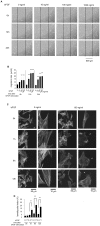

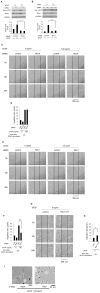
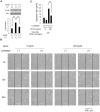
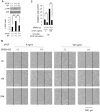

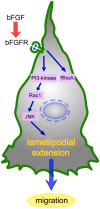
Similar articles
-
The activation of the NF-κB-JNK pathway is independent of the PI3K-Rac1-JNK pathway involved in the bFGF-regulated human fibroblast cell migration.J Dermatol Sci. 2016 Apr;82(1):28-37. doi: 10.1016/j.jdermsci.2016.01.003. Epub 2016 Jan 7. J Dermatol Sci. 2016. PMID: 26829882
-
bFGF Promotes the Migration of Human Dermal Fibroblasts under Diabetic Conditions through Reactive Oxygen Species Production via the PI3K/Akt-Rac1- JNK Pathways.Int J Biol Sci. 2015 Jun 1;11(7):845-59. doi: 10.7150/ijbs.11921. eCollection 2015. Int J Biol Sci. 2015. PMID: 26078726 Free PMC article.
-
NGF accelerates cutaneous wound healing by promoting the migration of dermal fibroblasts via the PI3K/Akt-Rac1-JNK and ERK pathways.Biomed Res Int. 2014;2014:547187. doi: 10.1155/2014/547187. Epub 2014 May 21. Biomed Res Int. 2014. PMID: 25006578 Free PMC article.
-
High-glucose inhibits human fibroblast cell migration in wound healing via repression of bFGF-regulating JNK phosphorylation.PLoS One. 2014 Sep 22;9(9):e108182. doi: 10.1371/journal.pone.0108182. eCollection 2014. PLoS One. 2014. PMID: 25244316 Free PMC article.
-
Tetrandrine inhibits migration and invasion of rheumatoid arthritis fibroblast-like synoviocytes through down-regulating the expressions of Rac1, Cdc42, and RhoA GTPases and activation of the PI3K/Akt and JNK signaling pathways.Chin J Nat Med. 2015 Nov;13(11):831-841. doi: 10.1016/S1875-5364(15)30087-X. Chin J Nat Med. 2015. PMID: 26614458
Cited by
-
Effects of adipose stem cell-conditioned medium on the migration of vascular endothelial cells, fibroblasts and keratinocytes.Exp Ther Med. 2013 Mar;5(3):701-706. doi: 10.3892/etm.2013.887. Epub 2013 Jan 7. Exp Ther Med. 2013. Retraction in: Exp Ther Med. 2016 Nov;12(5):3137. doi: 10.3892/etm.2016.3709. PMID: 23403954 Free PMC article. Retracted.
-
HGF-induced PKCζ activation increases functional CXCR4 expression in human breast cancer cells.PLoS One. 2012;7(1):e29124. doi: 10.1371/journal.pone.0029124. Epub 2012 Jan 5. PLoS One. 2012. PMID: 22242160 Free PMC article.
-
Effect of Pig-Adipose-Derived Stem Cells' Conditioned Media on Skin Wound-Healing Characteristics In Vitro.Int J Mol Sci. 2021 May 22;22(11):5469. doi: 10.3390/ijms22115469. Int J Mol Sci. 2021. PMID: 34067360 Free PMC article.
-
Enhancing Cutaneous Wound Healing Based on Human Induced Neural Stem Cell-derived Exosomes.Int J Nanomedicine. 2022 Dec 5;17:5991-6006. doi: 10.2147/IJN.S377502. eCollection 2022. Int J Nanomedicine. 2022. PMID: 36506346 Free PMC article.
-
Human Adipose-Derived Mesenchymal Stem Cells in Cell Therapy: Safety and Feasibility in Different "Hospital Exemption" Clinical Applications.PLoS One. 2015 Oct 20;10(10):e0139566. doi: 10.1371/journal.pone.0139566. eCollection 2015. PLoS One. 2015. PMID: 26485394 Free PMC article.
References
-
- Lauffenburger DA, Horwitz AF. Cell migration: a physically integrated molecular process. Cell. 1996;84:359–369. - PubMed
-
- Webb DJ, Parsons JT, Horwitz AF. Adhesion assembly, disassembly and turnover in migrating cells – over and over and over again. Nat Cell Biol. 2002;4:E97–E100. - PubMed
-
- Ridley AJ, Schwartz MA, Burridge K, Firtel RA, Ginsberg MH, et al. Cell migration: integrating signals from front to back. Science. 2003;302:1704–1709. - PubMed
-
- Smith LG, Li R. Actin polymerization: riding the wave. Curr Biol. 2004;14:R109–111. - PubMed
Publication types
MeSH terms
Substances
LinkOut - more resources
Full Text Sources
Other Literature Sources
Research Materials

